
Roots
To truly grasp the seismic shift in perceptions of textured hair, one must journey back to a time when strands were more than adornment; they were living narratives, etched with lineage and sacred meaning. The story of how the Civil Rights Movement altered perceptions of textured hair is not a tale confined to a mere historical moment. It is a profound exploration into the very essence of identity, a journey of reclamation rooted deeply in ancestral wisdom and the enduring spirit of Black and mixed-race communities. We speak of this shift not as a simple trend, but as a deep recalibration, a soulful reawakening to the inherent beauty of coils, kinks, and waves that had long been suppressed under the oppressive weight of imposed beauty norms.
For centuries, long before the transatlantic slave trade violently severed ancestral connections, hair held a revered position across diverse African societies. It served as a potent marker of identity, status, and spiritual connection. A person’s hairstyle could convey their tribe, marital status, age, wealth, or even their role within the community. Imagine, if you will, the artistry and communal reverence applied to each braid, each twist, each intricate pattern.
These were not simply decorative gestures; they were acts of communication, acts of faith, and acts of profound connection to one’s heritage. The knowledge of specific hair care practices, from the use of natural butters and herbs to intricate braiding techniques, passed through generations, forming an unbroken chain of ancestral wisdom.
The arrival of enslaved Africans in the Americas brought a brutal rupture to this rich tapestry of hair heritage. European slave owners, in their dehumanizing quest, often shaved the heads of captives, a deliberate act to strip them of cultural identity and sever a vital lifeline to their homelands. This violent imposition was merely the beginning of a systematic campaign to denigrate Black hair, labelling it as closer to “fur” or “wool” than human hair, thereby validating their abhorrent practices of enslavement and exploitation.
The perception of tightly coiled hair became weaponized, forming the basis of an informal caste system where lighter-skinned individuals with straighter hair were often granted more privileges in the plantation hierarchy. This period saw the forced adoption of European grooming standards, or the concealment of natural hair under scarves, a stark contrast to the once celebrated and visible heritage.
The echoes of this oppression continued long after the formal abolition of slavery. The societal ideal of beauty, deeply ingrained in Eurocentric standards, continued to elevate straight hair while devaluing textured hair. This pervasive message led many Black individuals to undertake dangerous measures to alter their hair, using hot combs and harsh chemicals that often resulted in scalp burns and hair damage, all in pursuit of a coerced societal acceptance.
The term “good hair” became a marker of proximity to whiteness, a painful testament to the internalized negativity surrounding naturally coily textures. It is against this backdrop of deeply entrenched historical and societal prejudice that the Civil Rights Movement emerged, poised to challenge not only legal segregation but also the very foundations of beauty perception.
The Civil Rights Movement marked a profound reawakening, shifting perceptions of textured hair from symbols of societal devaluation to emblems of pride and a reconnected heritage.

What Was the Ancestral Significance of Textured Hair?
Long before the transatlantic slave trade imposed its cruel legacy, textured hair in African societies was a vibrant lexicon, communicating profound truths about an individual’s life and community standing. In many West African cultures, a hairstyle could denote one’s social status, marital status, age, wealth, or even a person’s specific ethnic group. For instance, certain intricate braiding patterns might signify a woman’s eligibility for marriage, or a man’s warrior status.
The time and communal effort involved in styling hair underscored its importance; specialized individuals, revered for their skill and knowledge, were often entrusted with the care and creation of these living works of art. These traditions were not mere aesthetics; they were integral to social cohesion and individual identity, a living archive of a people’s story.
Hair was also deeply entwined with spirituality. Many African beliefs held that hair, being the highest point of the body and closest to the heavens, served as a conduit for divine communication and wisdom. Head wraps, often adorned with specific fabrics or patterns, were not just for protection; they carried spiritual significance, used in ceremonies or as symbols of reverence.
The communal rituals surrounding hair care—the cleansing with natural earths, the anointing with plant oils, the patient untangling and styling—were acts of deep spiritual connection, a tender thread connecting the individual to their ancestors and the cosmos. These practices, passed down through oral traditions and lived experience, represent a heritage that sought harmony between the self, community, and the spiritual realm.
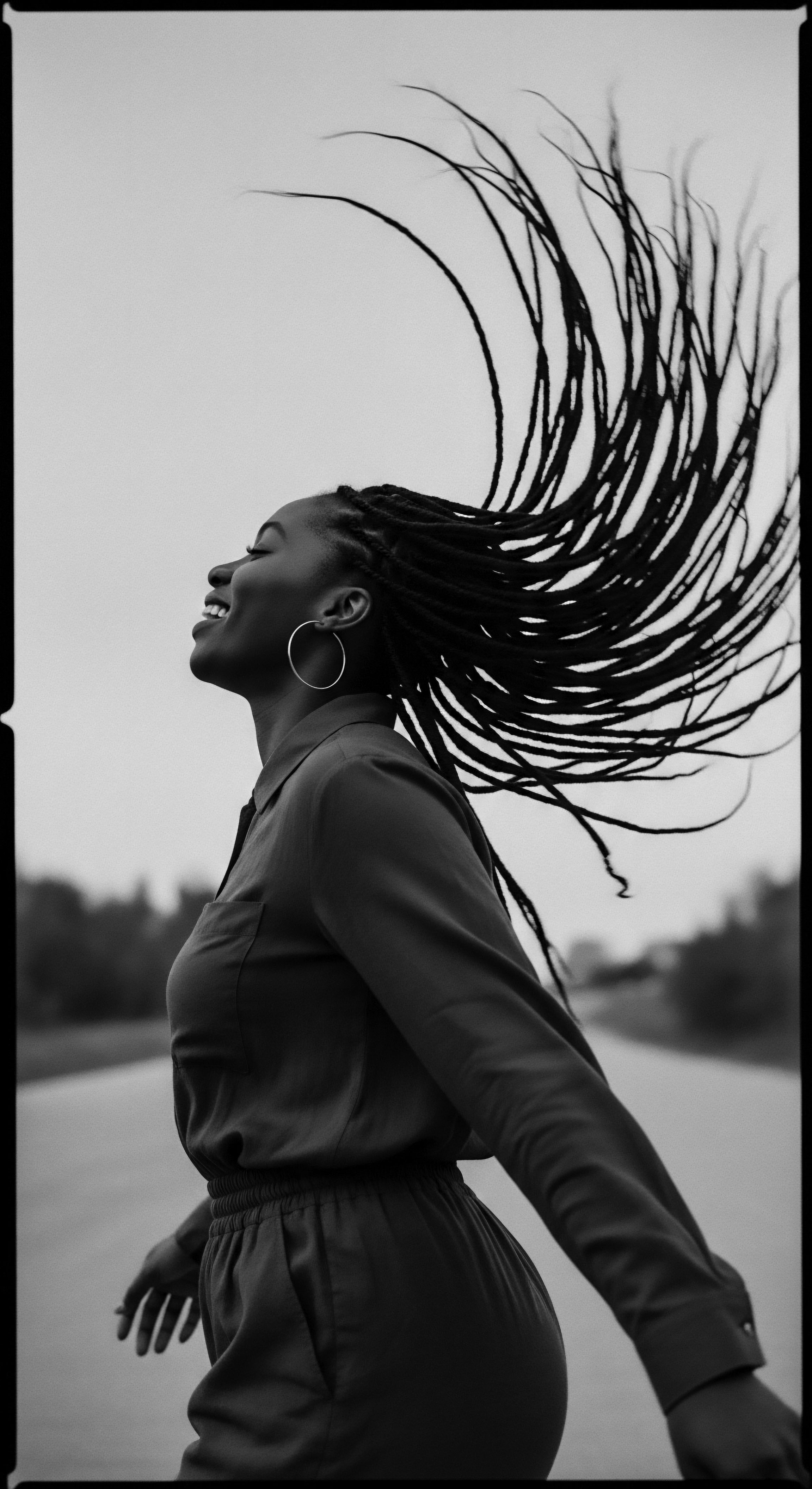
Did Colonialism Sever Hair Traditions?
Indeed, the era of colonialism and slavery sought to systematically dismantle these rich hair traditions. The forced shaving of heads upon arrival in the Americas served as a deliberate act of cultural erasure, severing both physical and symbolic ties to ancestral lands and identities. Enslaved Africans were denied the tools, oils, and the fundamental time necessary to maintain their hair, leading to matting and damage. The very word “dreadlocks” itself, according to some historical accounts, derives from the “dreadful” appearance of naturally loced Afro-textured hair as perceived by slave traders during the Middle Passage, highlighting the imposed negative associations.
Laws such as the Tignon Laws in 18th-century Louisiana, which required free Black women to cover their elaborately styled hair with scarves, stand as stark examples of direct legal attempts to suppress and diminish the cultural expression embodied in Black hair. These laws were designed to signify a lower status, a stark contrast to the celebratory and open displays of hair in pre-colonial Africa. Even when head coverings were mandated as a symbol of subordination, Black women often reclaimed them, adorning them with vibrant fabrics and jewels, transforming symbols of oppression into statements of resistance and enduring pride. This act of defiance, subtle yet potent, speaks to the resilience embedded within the heritage of textured hair, a heritage that would ultimately find its profound voice during the Civil Rights Movement.

Ritual
The 1960s unfolded, and a collective yearning for self-definition surged through the Black community. This period marked a profound transformation, an era where the deeply ingrained rituals of hair care and styling began to shed their association with assimilation and instead became powerful acts of self-affirmation, reclaiming an ancestral inheritance. The Civil Rights Movement did not merely alter perceptions; it ignited a spiritual and cultural resurgence, where the very act of wearing one’s hair as it naturally grew became a ritual of liberation.
The mantra “Black is Beautiful” resonated across communities, a rallying cry that explicitly challenged the Eurocentric beauty standards that had long dictated what was considered acceptable or desirable. This was a radical departure from generations of striving to achieve a straightened aesthetic, often through painful and damaging means. The Civil Rights Movement provided the ideological framework for this shift, linking personal appearance directly to political protest and cultural pride.
Wearing an Afro, for instance, ceased to be simply a style choice. It was a purposeful act of defiance, a visible declaration of racial pride and a repudiation of the notion that Black features were somehow inferior.
This cultural revolution extended beyond individual expression, weaving into the fabric of daily life and community. Hair care rituals, once performed in quiet defiance or to adhere to imposed norms, transformed into moments of connection and celebration. Salons, barbershops, and even communal gatherings became spaces where ancestral knowledge of hair care was revitalized, shared, and adapted.
Natural ingredients, traditional techniques, and the communal experience of caring for textured hair re-emerged as practices that honored a shared lineage. The growth of the natural hair care industry, which today boasts a multi-billion dollar valuation, has direct roots in this era of reawakening, born from a need for products that celebrated and catered to the unique needs of textured hair, rather than aiming to alter its natural state.
The embrace of natural hair during the Civil Rights era transformed personal grooming into a powerful communal ritual of identity and defiance.
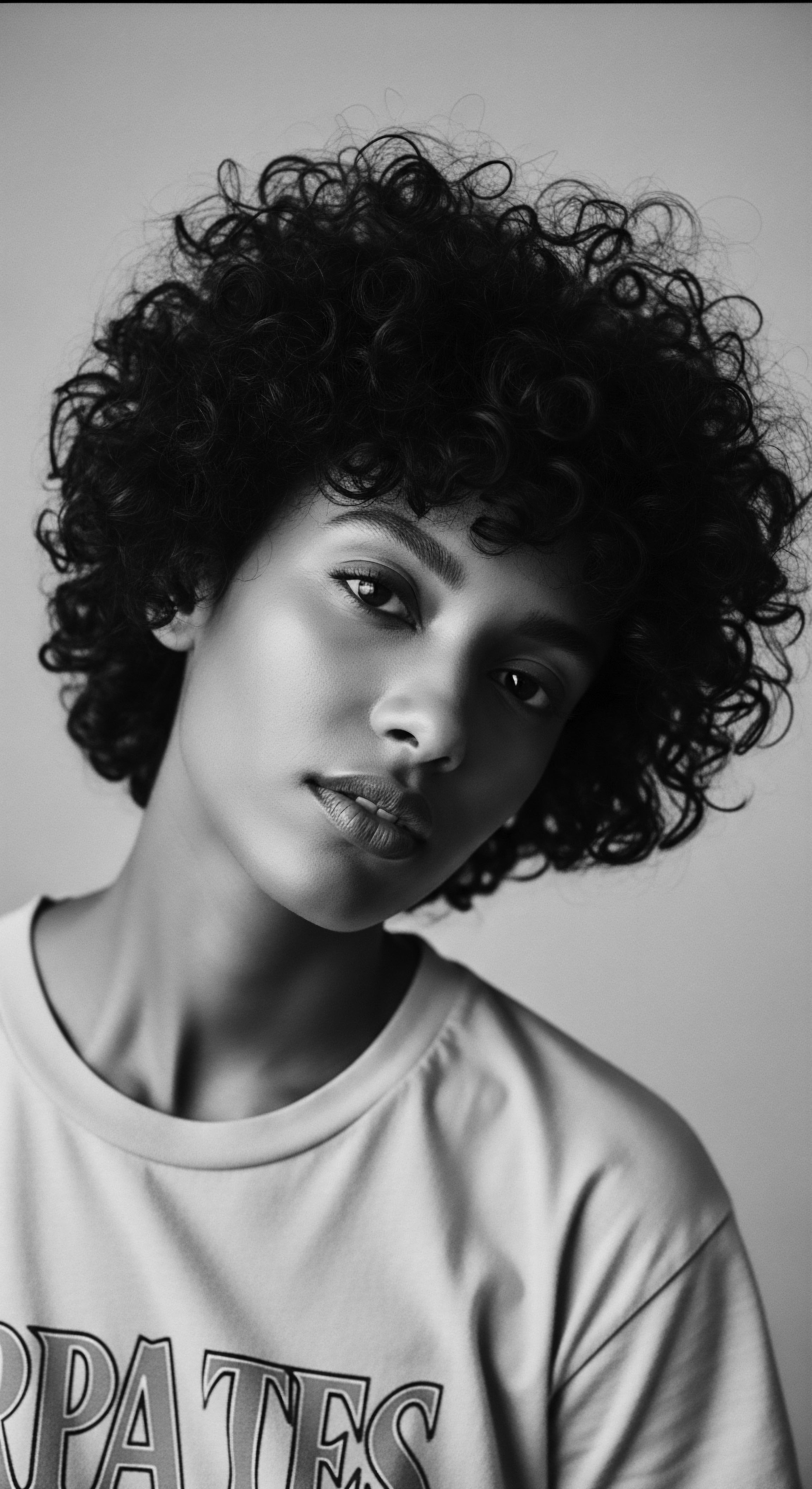
How Did the Afro Become a Symbol?
The Afro’s emergence as a dominant symbol during the Civil Rights Movement was not accidental; it was a deliberate and potent expression of collective identity and political agency. Figures like Angela Davis, with her iconic, unapologetically expansive Afro, became visual testaments to this new cultural landscape. Her image, prominently featured even on “Wanted” posters, solidified the Afro’s status as a symbol of revolutionary spirit and racial pride. The Black Panther Party, a leading force in the Black Power movement, also championed the natural Afro, solidifying its association with self-determination and resistance against systemic oppression.
This hairstyle became a form of non-verbal communication, signaling solidarity with the movement and a rejection of assimilation. It was a visible manifestation of the assertion that “Black is beautiful,” challenging centuries of imposed inferiority. The very volume and natural form of the Afro countered the straightened hair ideal, boldly stating that Black hair, in its unmanipulated state, was inherently dignified and worthy of reverence. This powerful visual statement permeated mainstream consciousness, sparking discussions and reactions that extended far beyond the Black community, forcing a re-evaluation of beauty standards across society.
The adoption of the Afro also triggered internal discussions within the Black community. While it became a widespread symbol of pride, some individuals who continued to straighten their hair faced judgment, sometimes even being subjected to “blacker-than-thou” policing by their peers. This internal negotiation reflected the complex journey of decolonization, where deeply ingrained beauty ideals held a powerful sway, even amidst a movement striving for liberation. Yet, the overwhelming impact was one of empowerment, inspiring a generation to reconnect with their African ancestry through their appearance.
| Era and Associated Hair Norm Pre-Colonial Africa ❉ Hair as identity, status, spirituality. |
| Perception of Textured Hair (Pre-Civil Rights) Revered, symbolic, diverse forms reflecting lineage. |
| Shift in Perception (During Civil Rights) Continuity of inherent beauty, but re-contextualized for modern pride. |
| Era and Associated Hair Norm Slavery & Colonialism ❉ Forced shaving, Eurocentric ideals. |
| Perception of Textured Hair (Pre-Civil Rights) Dehumanized, "animalistic," "unprofessional," to be concealed or altered. |
| Shift in Perception (During Civil Rights) A symbol of defiance, rejection of white supremacy, reclamation of heritage. |
| Era and Associated Hair Norm Post-Slavery & Jim Crow ❉ "Good hair" and assimilation pressure. |
| Perception of Textured Hair (Pre-Civil Rights) Inferior, requiring chemical or heat straightening for acceptance. |
| Shift in Perception (During Civil Rights) Natural hair (Afro, braids, locs) as a political statement, embracing Blackness. |
| Era and Associated Hair Norm Civil Rights & Black Power ❉ "Black is Beautiful" movement. |
| Perception of Textured Hair (Pre-Civil Rights) From undesirable to powerful, dignified, and politically charged. |
| Shift in Perception (During Civil Rights) From a burden to a crown, a source of pride and ancestral connection. |
| Era and Associated Hair Norm The Civil Rights Movement initiated a profound cultural and psychological transformation, allowing textured hair to reclaim its rightful place as a celebrated aspect of identity and heritage. |

What Were the Economic Repercussions of the Shift?
The reorientation towards natural hair was not solely a cultural phenomenon; it carried significant economic implications. For decades, the Black beauty market had been dominated by products designed for straightening hair, catering to the prevalent Eurocentric standards. Madam C.J.
Walker, a pioneering Black businesswoman, built her empire on hair-straightening products, reflecting the societal demand for such solutions in the early 20th century. While her business acumen was undeniable, her success also underscored the prevailing beauty norms that denigrated natural Black hair.
With the Civil Rights Movement’s emphasis on natural hair, a new market segment emerged. Consumers sought products that moisturized, defined, and nurtured their natural coils and kinks, rather than chemically altering them. This demand sparked a wave of innovation within the Black hair care industry, leading to a significant rise in products catering specifically to natural textured hair. Estimates suggest that the Black hair care market reached billions of dollars, with sales of hair relaxers seeing a significant decline in later decades as the natural hair movement gained broader momentum.
This economic shift represented a tangible divestment from Eurocentric beauty standards and a reinvestment in the celebration and care of ancestral hair textures. It was, in many ways, an economic arm of the larger liberation struggle, where dollars flowed towards products that affirmed Black beauty rather than attempting to reshape it.

Relay
The profound impact of the Civil Rights Movement on perceptions of textured hair continues to echo through generations, a powerful relay of ancestral wisdom and contemporary self-acceptance. The legacy of the 1960s extends beyond the visual spectacle of the Afro, shaping legal battles, societal norms, and the very psychology of Black and mixed-race individuals. This is not merely a historical footnote; it is a living narrative, continually written in classrooms, boardrooms, and personal reflections, underscoring the enduring connection between hair, identity, and the struggle for equity.
One particularly illuminating example of this enduring struggle and the movement’s legacy can be found in the ongoing fight for anti-discrimination legislation. The CROWN Act (Creating a Respectful and Open World for Natural Hair), first introduced in 2019, aims to expand the Civil Rights Act of 1964 to explicitly prohibit discrimination based on hair texture and protective hairstyles associated with race. This legislation, which has now passed in multiple states across the United States, stands as a direct response to persistent workplace and school discrimination against natural Black hair styles like Afros, braids, and locs. The very existence of such laws decades after the Civil Rights Movement highlights how deeply ingrained and subtle racial biases related to hair remained, even after the initial cultural shift of the 1960s.
For instance, a 2020 study, cited by Brooke Jackson and Aliya Rodriguez in their exploration of Black hair history, indicated that Black women with natural hairstyles were more likely to be perceived as less professional and, consequently, less likely to secure employment compared to Black women with straightened hair. This statistic underscores the insidious nature of hair discrimination and the continued societal pressure to conform to Eurocentric beauty ideals, even in the professional sphere. The CROWN Act, therefore, represents a continuing battle in the relay of civil rights, ensuring that the self-affirmation championed during the movement translates into tangible legal protection for ancestral hair forms.
The cultural historian Lori Tharps, co-author of Hair Story ❉ Untangling the Roots of Black Hair in America, chronicles how the Afro’s rise was not simply a style, but a “form of protest to say, ‘I am not going to straighten my hair anymore'”. This sentiment, born from the movement, reverberates in the ongoing natural hair movement of the 21st century. Social media platforms, for instance, have become virtual communal spaces where Black women share their natural hair journeys, offer care tutorials, and foster a global community rooted in the acceptance and celebration of diverse textures. This digital extension of the movement showcases how the initial spark of the Civil Rights era has been amplified, allowing for a broader and more accessible embrace of textured hair heritage.
The enduring legacy of the Civil Rights Movement is reflected in contemporary legal and social efforts to protect and celebrate textured hair, a continuous relay of heritage.
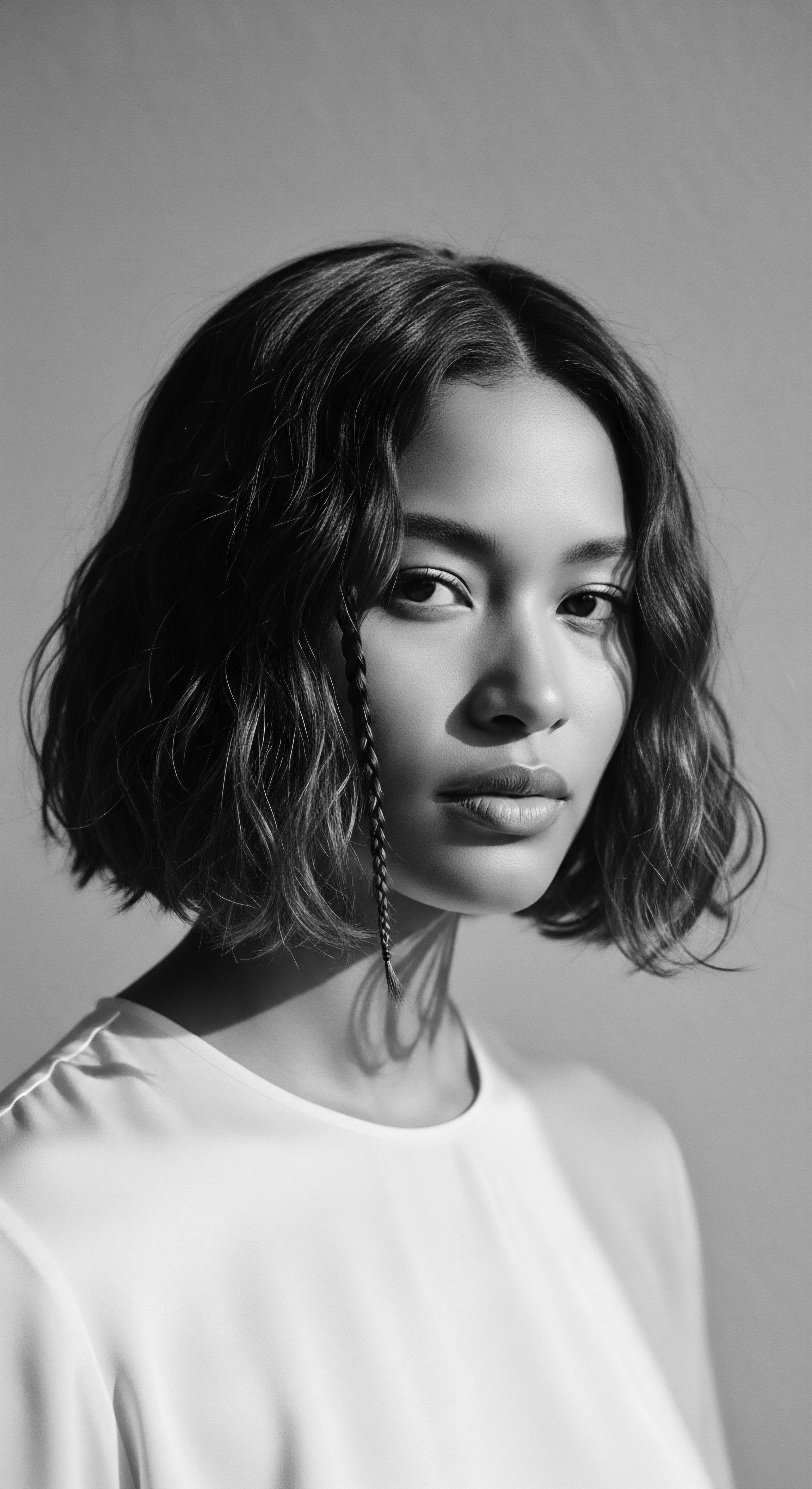
How Does Legal Precedent Address Hair Discrimination?
The legal landscape surrounding hair discrimination has been complex and, for decades, often yielded mixed results. Early cases, such as Jenkins v. Blue Cross Mutual Hospital Insurance in 1976, saw the U.S.
Court of Appeals for the Seventh Circuit upholding a race discrimination lawsuit regarding bias against Afros, asserting that workers were entitled to wear such styles under Title VII of the Civil Rights Act. This was a significant step, recognizing the Afro as a protected characteristic related to race.
However, subsequent rulings often narrowed this protection. A prominent challenge arose in cases involving braids and locs, where courts sometimes ruled that these were “mutable” or changeable characteristics, and therefore not covered by the same protections as immutable racial characteristics like skin color or hair texture itself. For instance, in a 1981 case, a court sided with American Airlines against a Black woman who was disciplined for wearing braids, arguing that braids were not an immutable racial characteristic. The Equal Employment Opportunity Commission (EEOC) has consistently argued against this narrow interpretation, asserting that race is a social construct that extends to “cultural characteristics related to race or ethnicity,” including grooming practices.
These legal battles underscore the necessity of legislation like the CROWN Act, which directly addresses the loophole created by these interpretations. By explicitly banning discrimination based on hair texture and protective styles, the CROWN Act reinforces the original spirit of the Civil Rights Movement—that discrimination based on racial characteristics, whether perceived as “mutable” or “immutable,” is unlawful. It acknowledges that the choice to wear natural styles is deeply tied to cultural identity and heritage, and therefore deserves explicit legal safeguarding.
- The Afro ❉ Emerged as a symbol of Black pride and defiance, directly challenging Eurocentric beauty norms and becoming a political statement during the Civil Rights and Black Power Movements.
- Braids and Cornrows ❉ Ancient African styles that gained renewed prominence as expressions of cultural connection and resistance, though faced legal challenges in workplaces.
- Locs ❉ Initially viewed with prejudice, their acceptance has grown, propelled by cultural pride and later by legal protections like the CROWN Act, despite historical rulings deeming them “mutable”.
- Head Wraps ❉ While historically mandated as a sign of subjugation, they were reclaimed during the movement as statements of cultural identity and resistance, often adorned with symbolic fabrics.
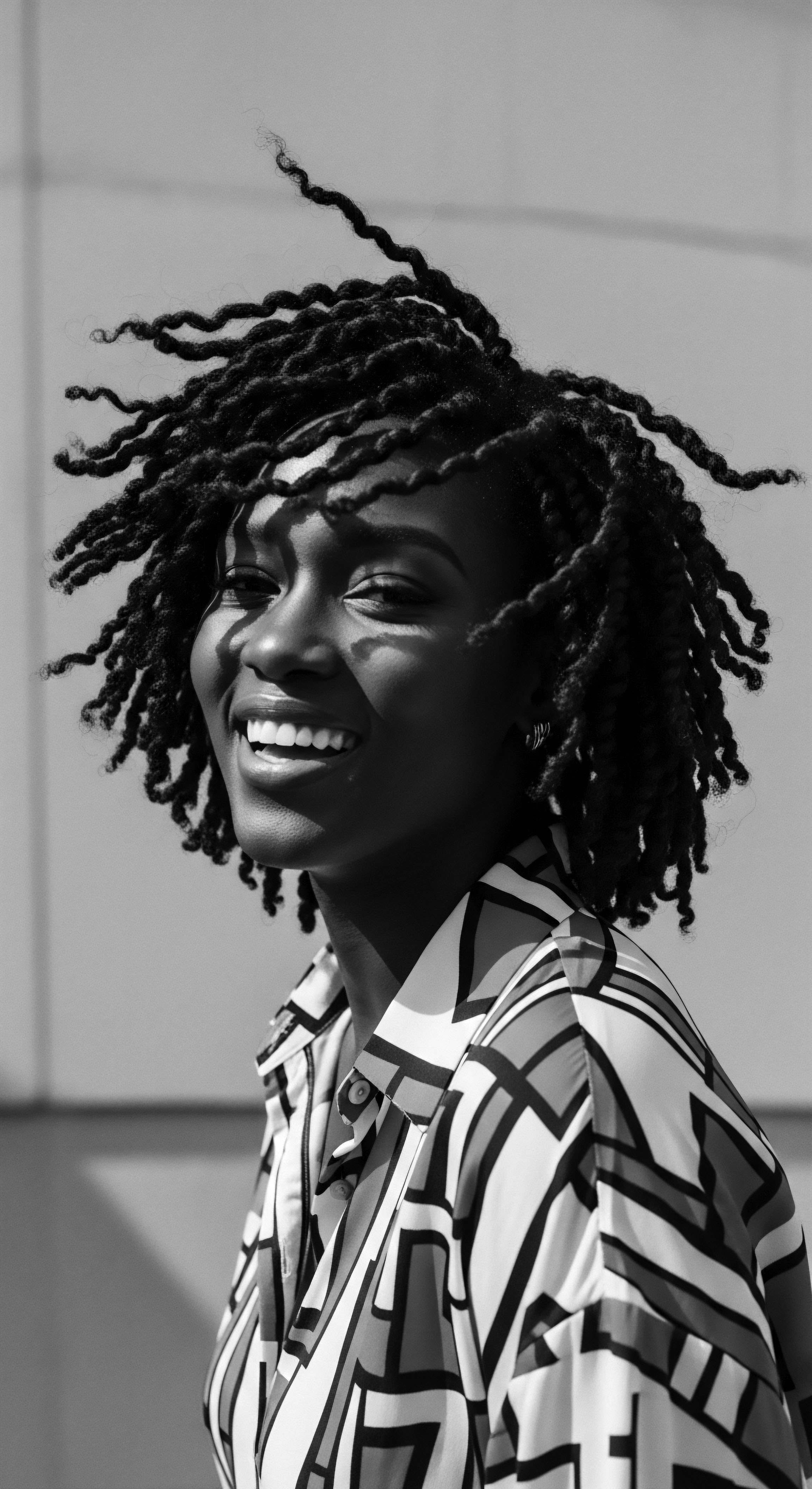
What is the Psychological Impact of Embracing Natural Hair?
The shift in perceptions of textured hair brought about by the Civil Rights Movement also had profound psychological implications, moving individuals from a state of internalized negativity towards a more affirmative self-image. For generations, the constant societal messaging that equated “good hair” with straight hair led to self-hatred and a disconnect from one’s natural self, particularly for Black women. Children as young as three or four years old reportedly understood the social hierarchy that hair texture could create.
The “Black is Beautiful” movement provided a powerful counter-narrative, assuring Black individuals that their natural skin tones, facial features, and hair textures were inherently admirable. This affirmation was a crucial step in psychological decolonization, helping to dismantle the internalized racism that had prompted many to alter their hair to conform to external standards. Embracing natural hair became an act of self-love and self-acceptance, a conscious choice to honor one’s ancestral lineage and innate beauty.
This psychological liberation continues today, with the modern natural hair movement fostering communities that provide emotional support, shared experiences, and validation for those on their natural hair journey. The collective assertion of natural hair, initially a political statement, has evolved into a widespread practice that bolsters self-esteem, promotes body positivity, and strengthens a sense of cultural belonging. It speaks to a deeper understanding of wellness that extends beyond mere aesthetics, recognizing hair as a sacred extension of self and a tangible link to heritage.
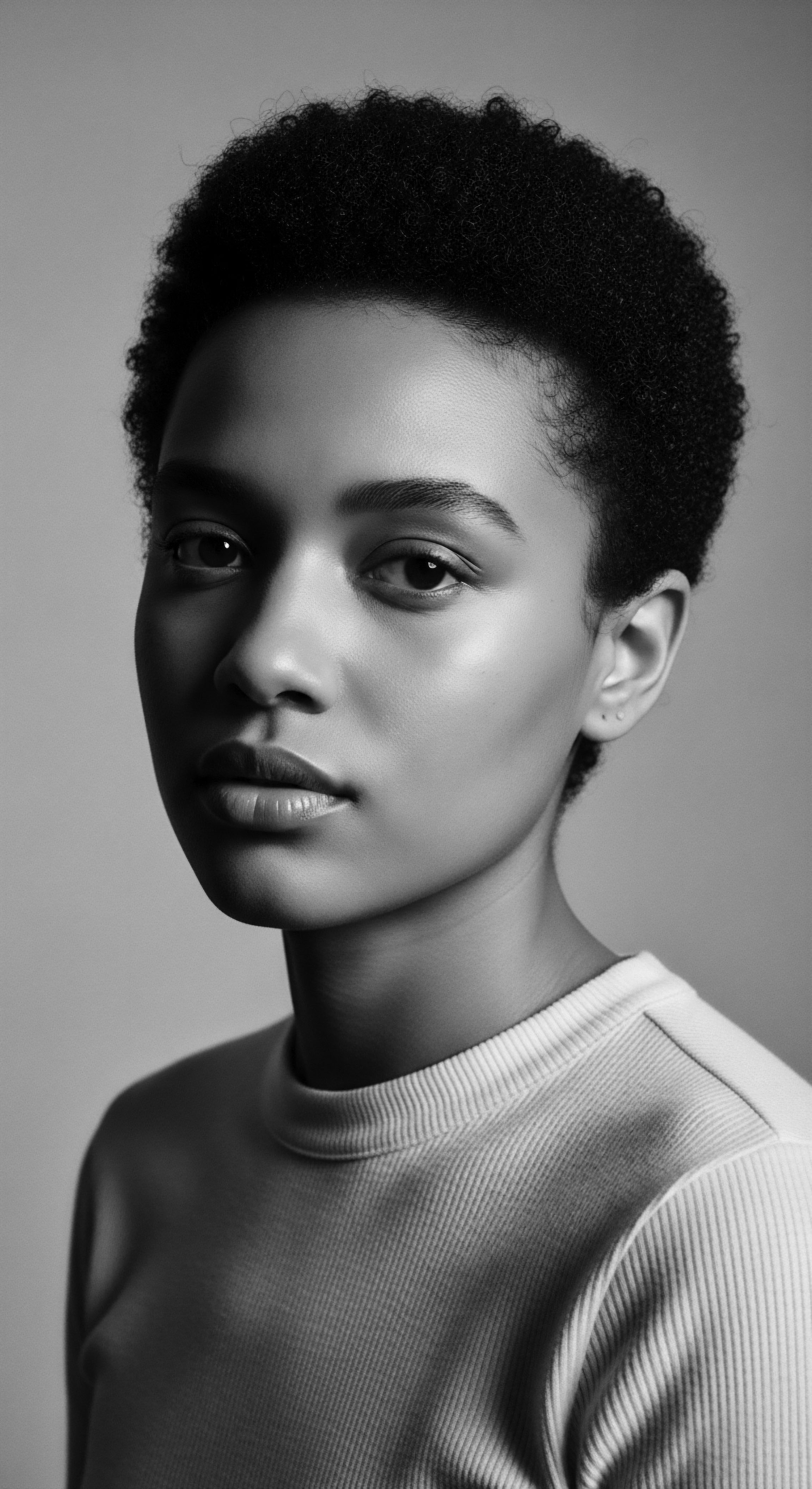
Reflection
The transformative power of the Civil Rights Movement on perceptions of textured hair echoes with a resonant truth ❉ our strands are more than mere biological extensions. They are living archives, imbued with the triumphs and struggles of generations, carrying forward the very soul of a strand. This shift was not an ending, but a new beginning, a profound re-alignment with an ancestral legacy that had been deliberately obscured. What was once seen as a physical marker of difference, often burdened by societal disdain, was re-visioned through the lens of liberation as a tangible expression of pride, resistance, and an unbroken connection to African heritage.
The journey from concealed hair to celebrated crowns, from chemically altered textures to gloriously natural coils, is a testament to the enduring spirit of self-determination. Each unique twist, each resilient strand, tells a story—a story of reclaiming narrative, honoring tradition, and forging a future where the intrinsic beauty of every textured hair pattern is not only accepted but deeply revered. This evolving story, a blend of ancient practices and modern science, continues to define holistic wellness for Black and mixed-race communities, reminding us that true beauty blossoms when heritage is acknowledged and cherished.

References
- Byrd, Ayana and Tharps, Lori. Hair Story ❉ Untangling the Roots of Black Hair in America. St. Martin’s Publishing, 2001.
- Patton, Tracey Owens. “Hey Girl, Am I More Than My Hair? ❉ African American Women and Their Struggles with Beauty, Body Image, and Hair.” Black Women, Beauty, and the Politics of Race. University of Texas Press, 2011.
- Craig, Maxine Leeds. Ain’t I a Beauty Queen? ❉ Black Women, Beauty, and the Politics of Race. Oxford University Press, 2002.
- Suggs, Cynthia M. “Hair and beauty choices of African American women during the Civil Rights Movement, 1960-1974.” Dissertation, University of North Carolina at Greensboro, 2021.
- Walker, Susannah. Style and Status ❉ Selling Beauty to African American Women, 1920-1975. University Press of Kentucky, 2007.
- Jackson, Brooke and Rodriguez, Aliya. “What Every Dermatologist Must Know About the History of Black Hair.” Journal of Drugs in Dermatology, 2023.
- Mbilishaka, Taqi and Clemons, Jessica. “PsychoHairapy ❉ Brushing Up on the History and Psychology of Black Hair.” Psi Chi Journal of Psychological Research, 2020.
- Hall, Ronald E. “The ‘Bleaching Syndrome’ ❉ African Americans’ Response to Cultural Denigration of Black Beauty.” Journal of Black Studies, 1995.
- Bencosme, Yamilex. “Beauty is Pain ❉ Black Women’s Identity and Their Struggle with Embracing Their Natural Hair.” Perspectives, 2017.
- White, Deborah Gray and White, Shane. Stylin’ ❉ African American Expressive Culture from Its Beginnings to the Zoot Suit. Cornell University Press, 1995.
